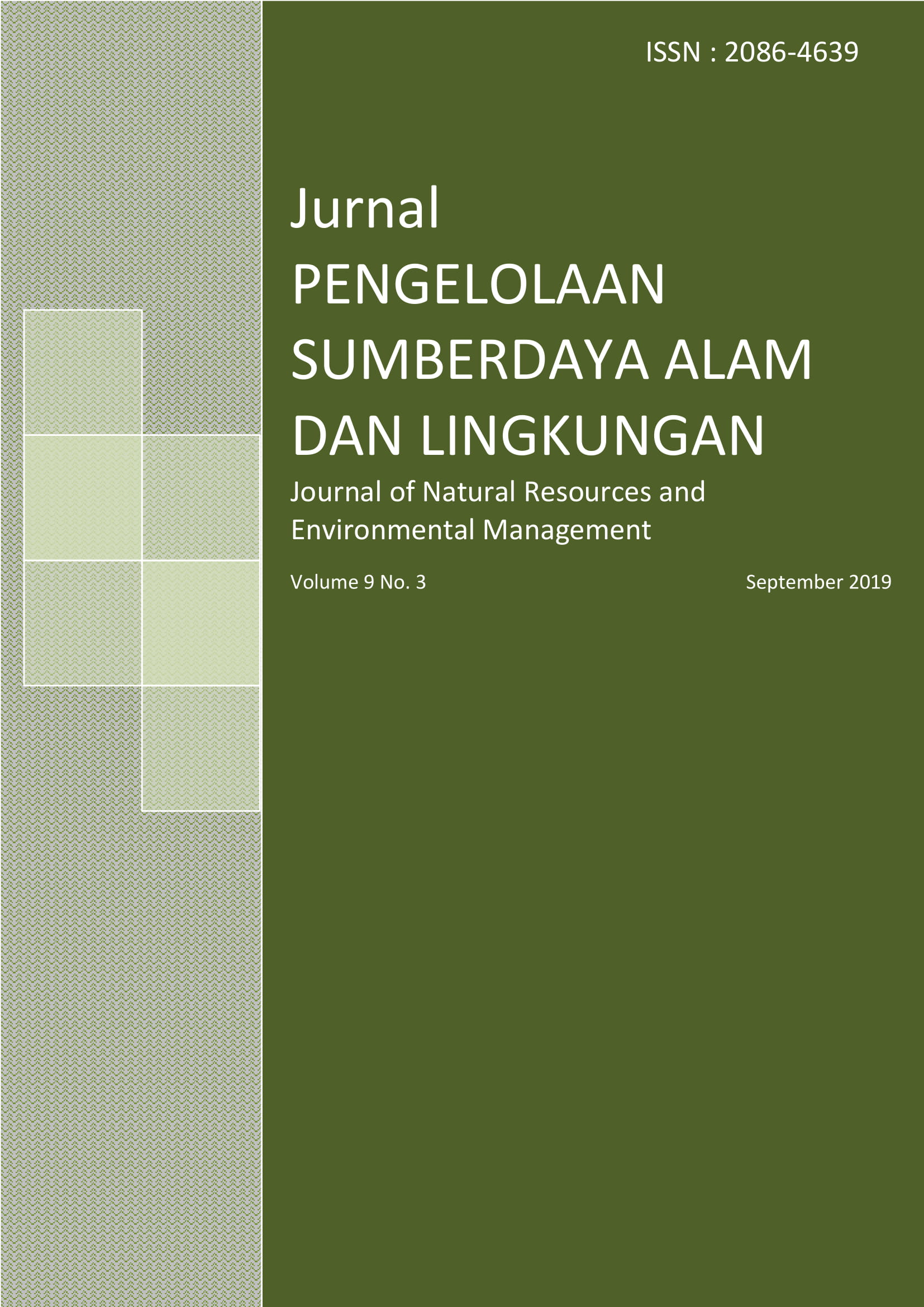Aplikasi kleinano dari tuf volkan Gunung Salak Indonesia sebagai adsorben alami kontaminan anionik: Fosfat perairan
Abstract
References
[CEES] Center for Earth and Environmental Science. 2015. Harmful Algal Bloom. Discovering the Science of the Environment. [diunduh 2018 Januari 3]. Tersedia pada: Indianapolis: https://cees.iupui.edu/algal-bloom.
Abidin Z, Matsue N, Henmi T. 2005. Molecular orbital analysis on the dissolution of nano-ball allophane under alkaline condition. Clay Sci. 13:1-6.
Abidin Z, Matsue N, Henmi T. 2007. Nanometer-scale chemical modification of nanoball allophane. Clays Clay Miner. 55:443-449.
Anwar S, Sudadi U. 2013. Kimia Tanah. Bogor: Institut Pertanian Bogor.
Bohn HL, McNeal BL, O’Connor GA. 1979. Soil Chemistry. New York: John Willey and Sons.
Calabi-floody M, Bendall JS, Jara AA, Welland ME, Theng BKG, Rumpel C, Mora ML. 2011. Nanoclays from an Andisol: Extraction, properties and carbon stabilization. Geoderma. 161:159-167.
Calabi-floody M, Theng BKG, Preyes P, Mora ML. 2009. Natural nanoclays: applications and future trends – a Chilean perspective. Clay Minerals. 44:161-176.
Carpenter SR, Caraco NF, Correle DL, Howarth RW, Sharpley AN, Smith VH. 1998. Nonpoint pollution of surface waters with phosphorus and nitrogen. Ecological Applications. 8(3):559-568.
Ghoneim A, Matsue N, Henmi T. 2006. Effect of copper adsorption on some charge characteristics of nano-ball allophane. Intern J Soil Sci. 1(3):243-250.
He H, Barr TL, Klinowski J. 1995. ESCA and solid-state NMR studies of allophane. Clay Minerals. 30:201-209.
Henmi T, Wada K. 1976. Morphology and composition of allophane. American Mineralogist. 61:379-390.
Kaufold SD, Abidin Z, Henmi T, Matsue N, Eichinger L, Kaufold A, Jahn R. 2010. Allophane compared with other sorbent minerals for the removal of fluoride from water with particular focus on a mineable Ecuadorian allophane. Appl Clay Sci. 50:25-33.
Leamy ML, Kinloch DI, Parfitt RL. 1990. International Committee on Andisols: Final Report. Technical Monograph No. 20. Soil Management Support Services, Washington DC.
Murphy J, Riley JP. 1962. A modified single solution method for the determination of phosphate in natural waters. Analytica Chimica Acta. 27:31-36.
Padilla GN, Matsue N, Henmi T. 2002. Adsorption of sulfate and nitrate on nano-ball allophane. Clay Sci. 11:575-584.
Shukla EA, Johan E, Abidin ZA, Henmi T, Matsue N. 2013. A comparative study of arsenate and phosphate adsorption on nano-ball allophane. Clay Sci. 17:83-91.
Sudadi U, Wijaya H. 2012. Water-phosphorus sorption on nano-fraction extracted from volcanic tuff of Mt. Salak, West Java, Indonesia. Paper presented at the Regional Workshop on Water, Land, and Southeast Asia Food Sovereignty. Department of Soil Science and Land Resource, Faculty of Agriculture, Bogor Agricultural University in collaboration with Exceed, DAAD, and Federal Ministry for Economic Cooperation and Development, Germany. 18-19 September 2012. IPB International Convention Center, Bogor, Indonesia.
Tan KH. 1965. The andosol in Indonesia. Soil Sci. 375-378.
Theng BKG, Yuan G. 2008. Nanoparticles in the soil environment. Elements. 4:295-399.
Van Ranst E, Utami SR, Shamshuddin J. 2002. Andisols on volcanic ash from Java Island, Indonesia: Physico-chemical properties and classification. Soil Sci. 167(1):68-79.
Wada K, Wilson M, Kakuto Y, Wada SI, 1988. Synthesis and characterization of a hollow spherical form of monolayer aluminosilicate. Clays Clay Miner. 36:11-18.
Wada K. 1967. A structural scheme of soil allophane. Amer Mineralogist. 52:690-708.
Yuan G, Wu L. 2007. Allophane nanoclay for the removal of phosphorus in water and wastewater. Sci Tech Adv Material. 8:60-62.
Authors
Authors who publish with this journal agree to the following terms:
- Authors retain copyright and grant the journal right of first publication with the work simultaneously licensed under a Creative Commons Attribution License that allows others to share the work with an acknowledgement of the work's authorship and initial publication in this journal.
- Authors are able to enter into separate, additional contractual arrangements for the non-exclusive distribution of the journal's published version of the work (e.g., post it to an institutional repository or publish it in a book), with an acknowledgement of its initial publication in this journal.
- Authors are permitted and encouraged to post their work online (e.g., in institutional repositories or on their website) prior to and during the submission process, as it can lead to productive exchanges, as well as earlier and greater citation of published work (See The Effect of Open Access).






